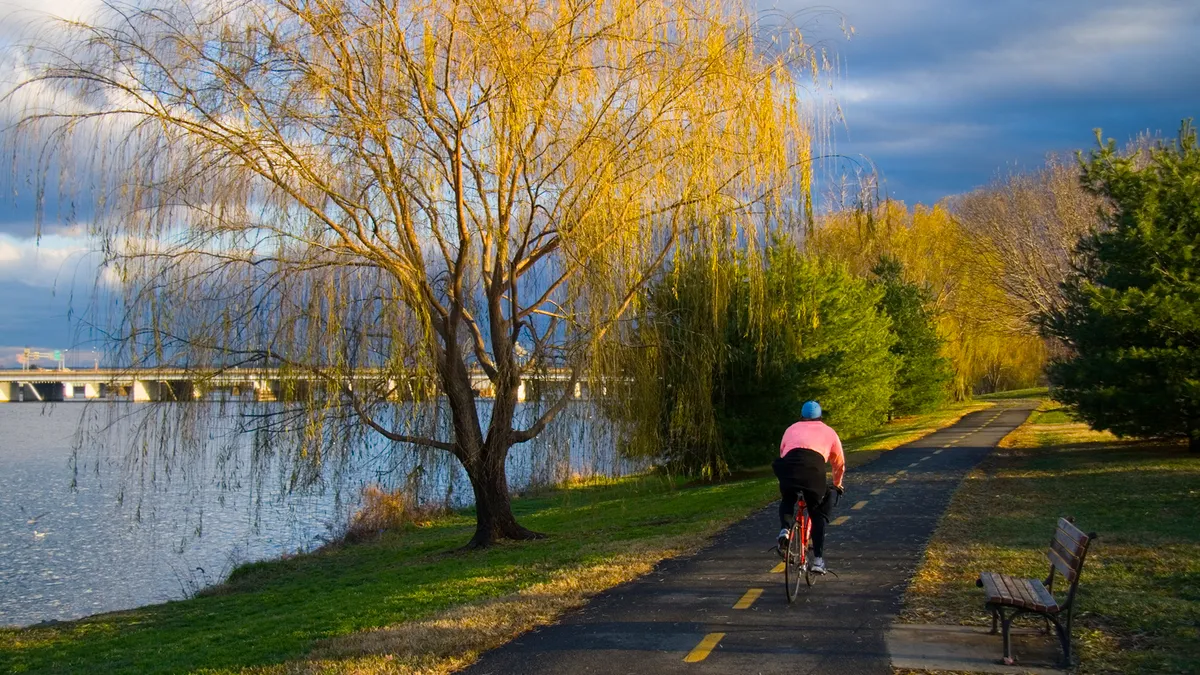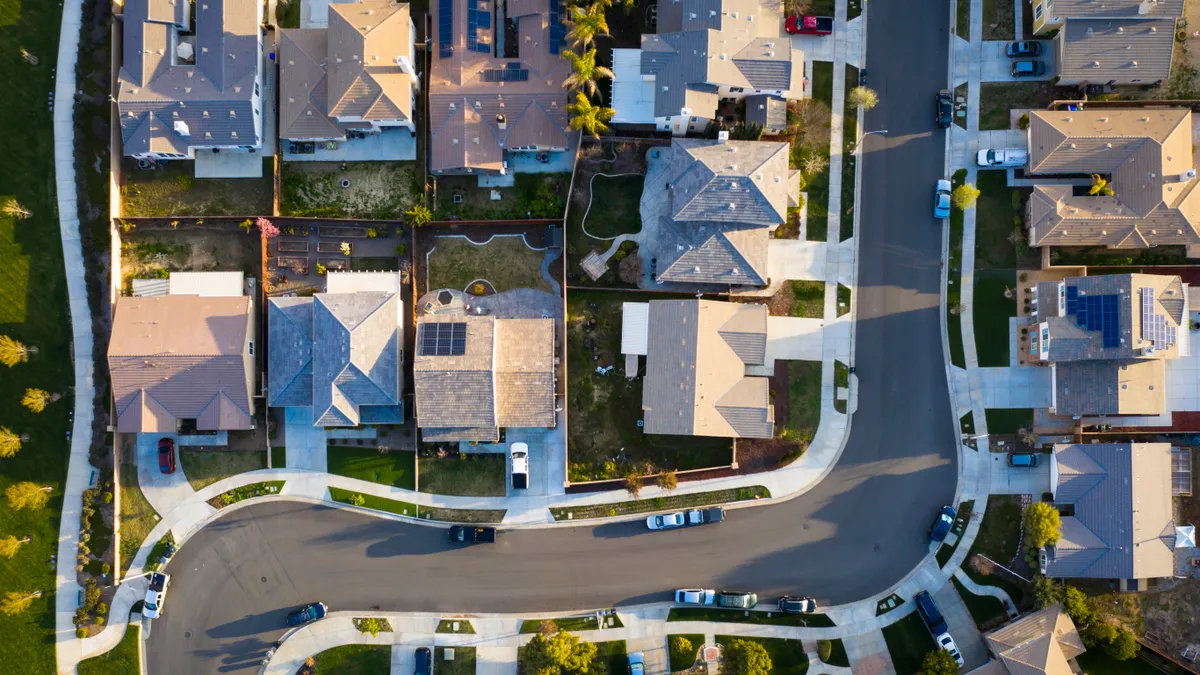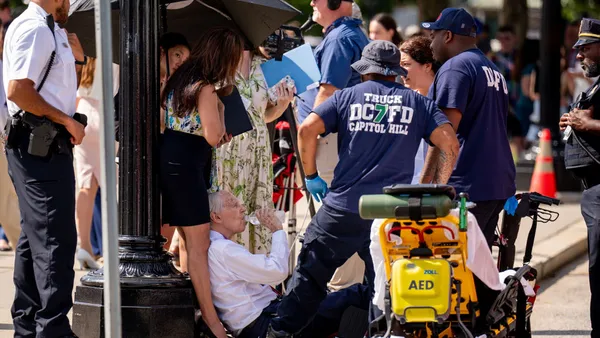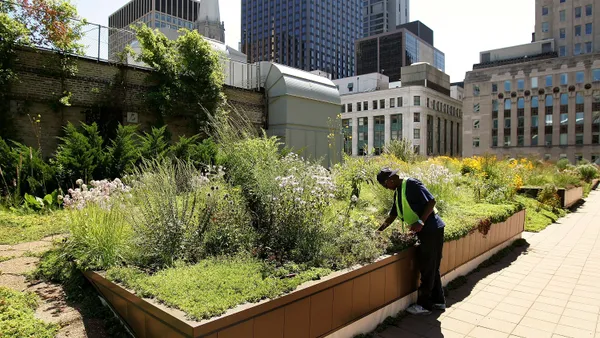Dive Brief:
- Cities are increasingly treating parks as key mitigators of climate change, but park budgets are stagnant and falling short of maintenance and growth needs, the Trust for Public Land said in a report Wednesday.
- An estimated $8.5 billion in deferred maintenance costs is approximately double the total annual spending on parks in the 46 cities that provided budget information to TPL's annual survey of the 100 most populous U.S. cities. “Many cities lack the funds to adequately care for their parks, let alone invest in major new infrastructure,” the report notes.
- The group advocates for new funding approaches to meet parks' needs, including ballot measures. A record 35 of the surveyed cities this year had voter-approved park bonds or other dedicated park-funding sources in place, according to the report.
Dive Insight:
People flocked to parks during the pandemic, perceiving them as safer places to recreate, exercise or just get some space amid the spread of the coronavirus. But funding to maintain and expand parks’ services has not grown accordingly.
At the same time, more cities are creatively leveraging the role parks can play in helping them measure, mitigate and adapt to climate change. A majority of the surveyed cities say they are using parks to counter urban heat and are adjusting surfaces to reduce flooding and runoff. A smaller number say they are "actively managing parks and woodlands" to sequester carbon dioxide or protect them from wildfires.
The more diverse range of benefits that people associate with parks — like the potential to reduce mental and physical health costs, or to help manage stormwater and air pollution — and the more that green infrastructure is considered a priority for infrastructure spending, the greater potential there may be to tap into more funding, Trust for Public Land Senior Director of Strategy and Innovation Linda Hwang and Climate Director Brendan Shane suggested.
"We were not encouraged to see that spending was [relatively flat]," Hwang said, adding that "the real problem is when you combine that with the fact that people are continuing to flock to parks." Still, she noted "a handful of great stories" where cities have taken advantage of federal funding to shore up staffing or chip away at deferred maintenance.
Shane said the $1.2 trillion infrastructure law that passed last year is among the federal funding creating new opportunities. “Ideally, we see the benefits of nature being understood more completely," Shane said, with the potential to tap into new private markets, or leverage carbon credits or similar systems. “The money is not increasing or holding pace with what the demands are.”
This is the Trust for Public Land's 11th year of evaluating cities through its ParkScore index, which weighs a city's acreage and investment devoted to parkland, as well as the parks' accessibility and amenities. Last year, the organization also began factoring in how equitable the distribution of park space is, considering neighborhood disparities by race and income.
For the second consecutive year, Washington, D.C., topped the U.S. rankings, with 24% of its land reserved for parks. The District "outperformed" on park equity and access metrics, TPL reports; neighborhoods where the majority of residents are people of color are as likely to be within a 10-minute walk of a park as neighborhoods where a majority of residents are White.
There's not necessarily a common thread among top-scoring cities' success, Hwang and Shane said. Cincinnati, for instance, rose from the eighth spot in 2021 to fourth this year, which TPL largely attributed to city policy changes allowing community use of schoolyards and playgrounds after hours and on the weekends. Des Moines, Iowa, meanwhile, rose 10 spots this year to 25th place: "That was entirely due to new spending from the philanthropic sector," Hwang said.













